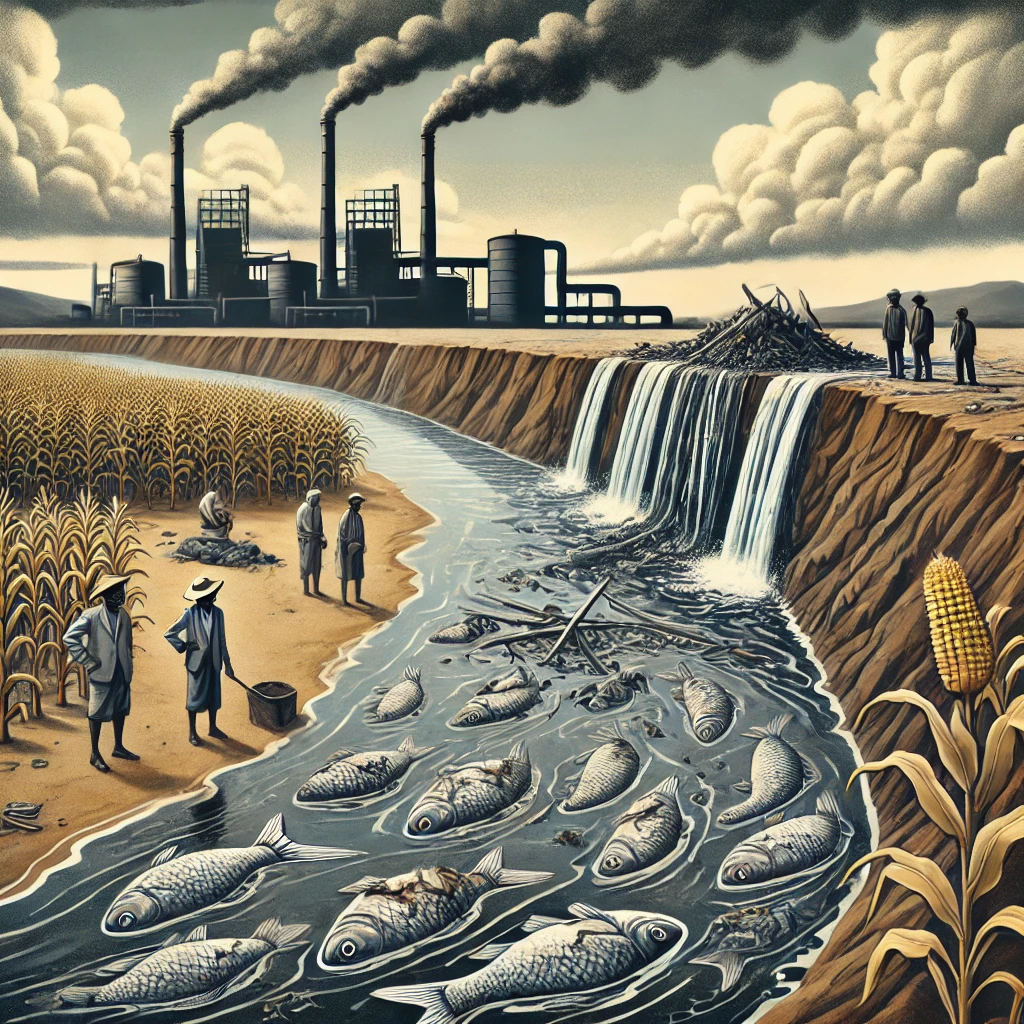
There is a rhythm to rivers, a quiet truth they carry in their flow—life, continuity, and the memory of a people’s survival. The Kafue River, winding through Zambia’s heart, has long been more than water; it is breath itself for those who live beside it. But now, its current runs bitter, and its depths whisper of betrayal.
On the morning of February 18, 2025, a disaster unfolded in Chambishi, in Zambia’s Copperbelt, that speaks to the dangers of ambition untempered by responsibility. The tailings dam at Sino Metals Leach Zambia Limited gave way. With it came a violent surge—a torrent of acidic waste, thick with heavy metals, surging into the Mwambashi Stream, poisoning the very waters that feed the Kafue River.
Environmental disaster
The river, once a bearer of life, now carries death. In its wake, thousands of fish floated lifeless, turned casualties by the river’s sudden transformation into a conduit of toxins. The Ministry of Fisheries and Livestock, with urgency edged in desperation, has warned the people: do not eat the fish. The river’s bounty, once a promise of nourishment, has become a danger—a cruel inversion of its purpose.
But the tragedy does not end at the water’s edge.
In Mwambashi Ward, over 200 farmers stare at ruined lands. Fields that once bloomed with maize, onions, and cabbage now bear only the scars of contamination. For Anthony Mwape, whose four-hectare plot was set for a March harvest, the loss is total. His crops—his livelihood—lie poisoned by soil soaked in deadly runoff. His voice, weary but unbowed, carries the sorrow of many: “What do we plant when the earth itself has been turned against us?”
The reach of this calamity stretches further still. In the towns of Kalulushi and Kitwe, the disaster has cut off safe drinking water. Nkana Water, tasked with providing for these urban centers, now grapples with the impossible—purging heavy metals from the Mwambashi Stream, Kalulushi’s primary water source. Even as they labor, water samples from Kafue Bridge in Kitwe show a truth that cannot be ignored: the water’s acidity remains dangerously high, its pH levels sinking into realms unfit for life.
Who to blame?
And so the question lingers in the air: Who is to blame when the water turns bitter?
The answer, as ever, lies in power—and its misuse.
Preliminary investigations have traced the catastrophe back to operational negligence at Sino Metals. The dam’s collapse, it seems, was no tragic accident but a consequence of ignored inspections and deferred maintenance. Mines Minister Paul Kabuswe, speaking with the weight of the presidency behind him, relayed President Hakainde Hichilema’s deep concern. The government, he assured, would ensure accountability. But for those whose lives have already been upended, accountability feels like a distant promise.
Meanwhile, Sino Metals—the architects of this disaster—have offered an apology. Pei Wen Zhang, the company’s chairperson, extended regrets to President Hichilema and the Zambian people. But apologies, no matter how earnestly given, cannot cleanse a poisoned river. They cannot restore lost crops or bring back fish from polluted waters.
As the toxic plume creeps downstream at 40 kilometers per day, the question of what comes next looms large. How far will the poison spread? How many lives will it touch? The ecological and human costs remain unknown, suspended in the slow-moving current of the Kafue.
This tragedy is not merely a tale of industrial failure—it is a reckoning. A stark reminder that progress without stewardship is ruin, that the cost of negligence is always borne first by the vulnerable.
In the end, rivers remember. They carry the weight of what we pour into them—hope or harm. The Kafue, now burdened with toxins, waits for our answer. Will we learn, or will we let its bitter waters speak of a lesson ignored?
Want to Leanr more. My sources are your sources: Lusaka Times, Copperbelt Katanga Mining, ZNBC, Diggers News, Diamond TV Zambia
